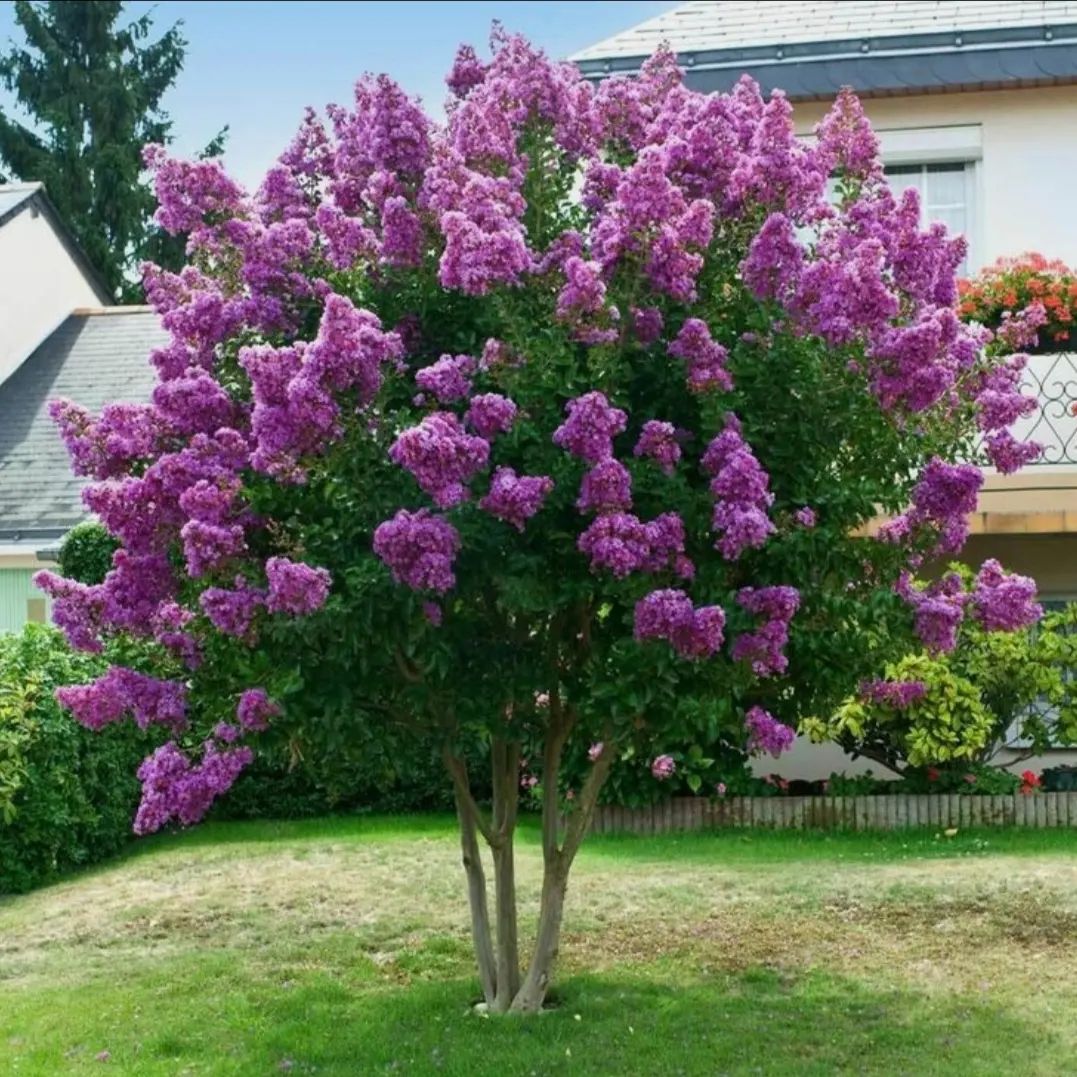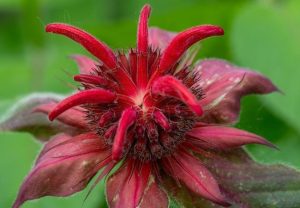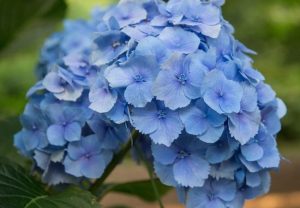Learn how to grow and care for Purple Crepe Myrtle, a stunning tree known for its vibrant purple blooms. Get tips on planting, pruning and maintaining this beautiful addition to your garden.
Purple Crepe Myrtle trees are a stunning addition to any landscape, known for their vibrant purple blooms and attractive bark. This guide will walk you through everything you need to know about growing and caring for these beautiful trees, ensuring you can enjoy their colorful display year after year.
What is Purple Crepe Myrtle?

Here’s a detailed chart with information about purple crepe myrtle:
| Category | Information |
|---|---|
| Botanical Name | Lagerstroemia spp. |
| Common Name | Purple Crepe Myrtle |
| Plant Type | Deciduous Shrub or Small Tree |
| Hardiness Zone | Zones 6-9 (varies by variety) |
| Sun Exposure | Full Sun |
| Soil Type | Well-drained, slightly acidic to neutral soil |
| Watering | Moderate; drought-tolerant once established |
| Growth Habit | Upright, multi-stemmed |
| Height/Spread | 10-25 feet tall, 6-15 feet wide (varies by variety) |
| Special Features | Showy clusters of purple flowers in summer; Attractive peeling bark; Drought-tolerant; Deer-resistant; Excellent for ornamental use in landscapes |
Purple Crepe Myrtle (Lagerstroemia indica) is a deciduous tree or large shrub known for its:
- Vibrant purple flowers that bloom in summer and fall
- Attractive, exfoliating bark
- Ability to thrive in warm climates
These trees are native to Asia but have become popular in many parts of the United States, particularly in the South.
Varieties of Purple Crepe Myrtle
There are several varieties of Purple Crepe Myrtle, each with its own unique characteristics:
- ‘Catawba’ – Deep purple flowers, grows 15-20 feet tall
- ‘Zuni’ – Lavender-purple flowers, compact growth to 10-12 feet
- ‘Purple Magic’ – Dark purple flowers, drought-tolerant, grows 6-10 feet
- ‘Twilight’ – Dark purple flowers, mildew-resistant, reaches 20-25 feet
Planting Purple Crepe Myrtle
To get your Purple Crepe Myrtle off to a good start, follow these planting tips:
When to Plant
- Plant in spring or fall for best results
- Avoid planting during extreme heat or cold
Where to Plant
- Choose a spot with full sun (6+ hours of direct sunlight daily)
- Ensure good air circulation to prevent fungal diseases
- Allow enough space for the mature size of your chosen variety
How to Plant
- Dig a hole twice as wide as the root ball and just as deep
- Place the tree in the hole, ensuring it’s at the same depth as it was in the container
- Backfill with soil, tamping down gently to remove air pockets
- Water thoroughly after planting
Caring for Purple Crepe Myrtle
Proper care will ensure your Purple Crepe Myrtle thrives and produces abundant blooms.
Watering
- Water deeply and regularly during the first growing season to establish roots
- Once established, Purple Crepe Myrtles are drought-tolerant
- Water during extended dry periods, especially when buds are forming
Fertilizing
- Apply a balanced, slow-release fertilizer in spring
- Avoid over-fertilizing, which can lead to excessive foliage growth at the expense of blooms
Pruning
Proper pruning is crucial for maintaining the health and appearance of your Purple Crepe Myrtle:
- Prune in late winter or early spring before new growth begins
- Remove dead, damaged, or crossing branches
- Thin out some of the smaller twigs to improve air circulation
- Avoid topping the tree, which can damage its natural shape
Learn more about proper Crepe Myrtle pruning techniques
Mulching
- Apply a 2-3 inch layer of mulch around the base of the tree
- Keep mulch away from the trunk to prevent moisture build-up and fungal growth
Common Problems and Solutions
While Purple Crepe Myrtles are generally hardy, they can face some issues:
Powdery Mildew
- Appears as a white, powdery coating on leaves
- Improve air circulation and avoid overhead watering
- Choose mildew-resistant varieties if this is a persistent problem
Aphids
- Small insects that can cluster on new growth
- Spray with a strong stream of water to dislodge them
- Use insecticidal soap for severe infestations
Sooty Mold
- Black, sooty coating on leaves, often following aphid infestations
- Control aphids to prevent sooty mold
- The mold will eventually weather away once the aphids are gone
Enjoying Your Purple Crepe Myrtle
Beyond their beautiful blooms, Purple Crepe Myrtles offer year-round interest:
- Summer and Fall: Vibrant purple flowers
- Fall: Leaves turn beautiful shades of yellow, orange, or red
- Winter: Attractive bark is revealed after leaves drop
Consider these ideas to showcase your Purple Crepe Myrtle:
- Plant as a focal point in your landscape
- Use as a natural privacy screen when planted in a row
- Pair with complementary plants like yellow daylilies or white garden phlox
- Incorporate into a mixed border with other flowering shrubs and perennials
Purple Crepe Myrtles are stunning trees that can bring vibrant color and year-round interest to your landscape. By following these planting and care tips, you can ensure your tree thrives and produces abundant blooms year after year.
Remember, the key to success with Purple Crepe Myrtle is:
- Planting in the right location with full sun
- Providing proper care, especially in the first year
- Pruning correctly to maintain health and shape
- Watching for and addressing any pest or disease issues promptly
With a little care and attention, your Purple Crepe Myrtle will reward you with a spectacular display of purple blooms that will be the envy of your neighborhood. Happy gardening!
For more gardening tips and plant care guides, visit https://solanogarden.org/



